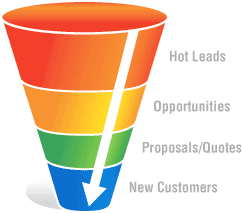A continual challenge for marketers – how do we make deals go faster as marketers? The initial concept which jumps to mind is automation, but marketing automation is a tool that requires context. Many marketers are finding while have technology improves visibility, it may not be changing overall results.
Results requires understanding not just the goals of business, but the goals of the buyer. This requires empathy and context. To get context around the buying journey, interviews and specifically Win/Loss help provide the roadmap. Win/loss provides insights into the buyers, process and criteria used to make a decision. As such, it can often improve velocity by allowing you to better support the buying process through the following:
Creating A Baseline
Gain your under standing of the buying process and participants through Win/Loss. During your discovering of how the decisions are made and who participates you make find you need to build more stuff – collateral, tools and content in general. While you may have some of the items, you will find there are gaps in materials needed to nurture leads and bring buyers along on their journey.
Where gaps in tools and content exist, it often introduces delays in follow up. Custom tools must be created. Even if the team isn’t creating one-off pieces, the reactive nature slows the process down. Win/loss helps you identify and prioritize sales tools so you can proactively arm your customers and salespeople.
Find the Friction
Win/loss identifies points in the buying process where internal processes and sales steps are inconsistent with buyer expectations. For example, perhaps the conflict is seen as arduous or the time to receive a quote seems too long. Some of these items may not be the domain of marketing, but having market knowledge empowers other teams to prioritize initiatives that can improve sales timelines.
Optimizing The Funnel
Win/loss not only helps move deals faster, it also provides guidance on when a deal may not be the right one. Knowing early whether to run from a bad deal increases channel productivity, because it allows individual reps to stay focused on deals they can win.
Lead scoring is a collaborative, iterative sales exercise that identifies the actions taken by individual evaluators and defines a score or value for each action completed. Once evaluators reach a certain score, they are classified as a qualified lead, meaning they have the correct characteristics for sales engagement.
Win/loss calls are invaluable for defining the steps evaluators take and the value of each. Plus, once a lead scoring program is deployed and a baseline established, additional win/loss efforts can help fine-tune the definition of “qualified,” making it increasingly accurate.
Using win/loss to better understand the buying process, identify gaps and focus your salespeople can improve speed to close, another reason it is one of the most powerful tools for any marketing department.
A version of this article appeared @ http://pragmaticmarketing.com/resources/ask-the-experts-can-winloss-speed-up-the-sales-cycle



